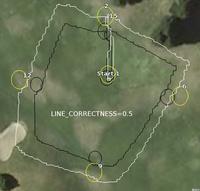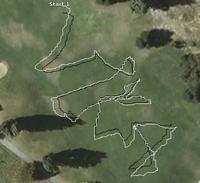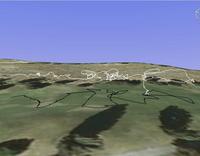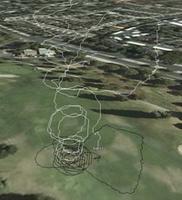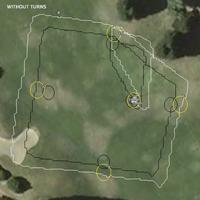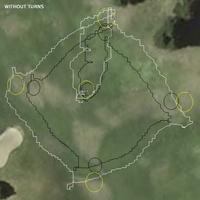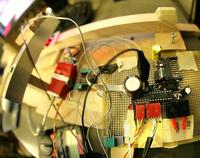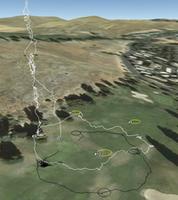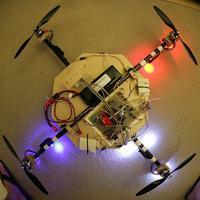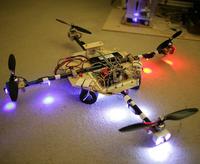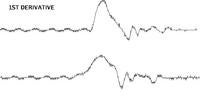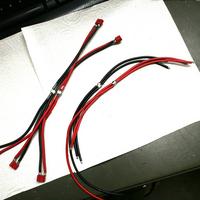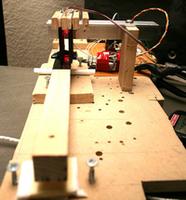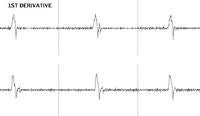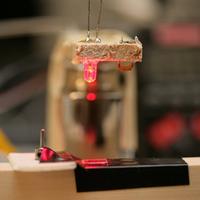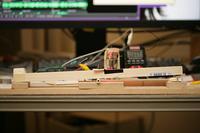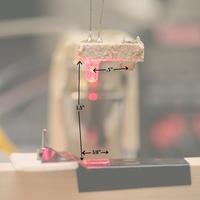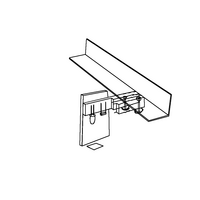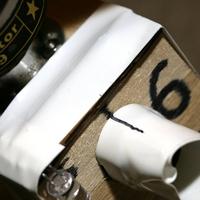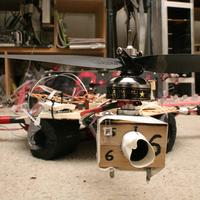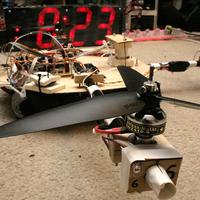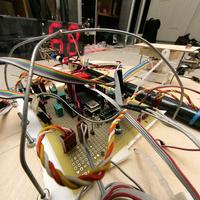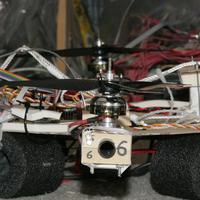Posted by Jack Crossfire |
Dec 31, 2008 @ 06:20 PM | 5,927 Views
will be central planning.
In 2009, you're going to fund $3 trillion of government departments, $1 trillion of economic stimulus packages, & $2 trillion of municipal bond bailouts using a total GDP of $10 trillion. It can't come from China, Japan, heaven, or anywhere else because there isn't enough money. There's only 1 way to spend $6 trillion when U only make $10 trillion: by centrally planning activities.
We don't think your government is going to raise taxes by $6 trillion. Your government is going to do it by central planning. You're not going to be able to do anything U want unless it's part of a central plan. 60% of every day job, movie, meal, vacation, house, SUV, toy, gadget, stock trade, piece of clothing is going to have to be approved.
There is no way to run 60% of an economy through government stimulus if everyone is free to do 100% of what they want.
How do U make people obey the central plan? By selling massive numbers of bonds & making anyone who competes with bonds so poor all their resource consumption has to come from the committee. For example, if U need loans to build UAV's & the central committee sells bonds to fund the auto industry, U best switch from making UAV's to making SUV's.
Building cars, building houses, & lending mortgages will comprise most of the central plan. Perhaps you expected more creative pursuits. Fuggedaboutit. If U have other interests, U won't have them much longer.
Posted by Jack Crossfire |
Dec 31, 2008 @ 01:26 PM | 6,127 Views
The bang bang altitude feedback sets the climb rate to no less than 0.3m/s & up to 0.5m/s. If dZ goes below -1m/s, collective gets another +0.1 added. We haven't had any problems with it. It's worked better than the mikrocopter algorithm.
Bang bang feedback was the first algorithm that worked in 2007 with the Corona & it was forgotten because it didn't make sense, but it works.
Landings are faster. Got it descending to the starting altitude at -0.5m/s, then switching to -0.3m/s. The starting altitude is where U flipped the autopilot switch or 10m above where the automatic takeoff began. She magically knows when U want an automatic takeoff.
Got another spiral landing. Suspect it's a gyro bias error from turning. Now just giving up on biasing the yaw gyro since its bias is too sensitive to turns.
We're up to bang bang feedback, ignoring Z gyro bias, & ignoring Z accelerometer. Every Goog search has been thrown out.
Posted by Jack Crossfire |
Dec 30, 2008 @ 01:57 PM | 6,696 Views
Go to
vicacopter.com & download VicaCopter's brain.
2 months after VicaCopter 2.0, it's VicaCopter 3.0. This code drop has the quad rotor support, UAV programming language, automated takeoffs & landings, curved paths, pirouettes, & turning towards a point.
There R people who spend their entire natural lives programming fixed wing line following algorithms. Beyond a certain speed, VicaCopter also needs a better line algorithm. The best we have is slowing down the fake waypoint as the error grows. It makes 4 some slow flying. U can probably compromise between the amount of slowing & the accuracy of the line.
The piano sensor is down to the actual microchip of the final product & trying everything to make the tone quality reproducable. It's quantizing it to just 3 tone qualities & analysing just the first half of the key press, 30ms of data.
Doubt an external oscillator could propagate far enough & fan enough to be economical so we're stuck with the free 8Mhz oscillator. A trick 4 U PIC fans is to set the overclocking register OSCTUNE to maximum to get 8.8Mhz out of the internal oscillator.
It's time for the biggest story of 2008.
Oobs may be the biggest story for Time Warner, but the skin color story died back in the 60's. U just get excited about it because U do what you're told.
The credit crisis was savings & loan 2.0. We're waiting for the medicare crisis.
It may surprise you, but the biggest story was the space station. Yes indeed. The space station is the most ambitious thing humans R doing. In 2008 the Columbus module, experiment rack, & Japanese module got hoisted up & the solar alpha rotary joint got fixed, all for 1/400th the cost of subsidizing ground based houses.
Posted by Jack Crossfire |
Dec 29, 2008 @ 03:43 AM | 6,282 Views
Had a rare moment when the GPS, radios, propellers, batteries, motors, IMU, compass, airframe, computers, weather, & camera all worked simultaneously.
Here U have a pirouetting translation, a nose-in orbit, a translation pointing towards a point, & a simple pirouette before all the batteries were dead. A bug in the arc solver led to a gnarly 2nd landing.
This is probably as stable as it can get without local DGPS, ground based vision, or onboard vision.
Threw another arcane feature you'll never remember into UAVPL. If any lon lat or alt coordinate is set to 0, the 0 coordinate is replaced by the starting coordinate. Set all your altitudes to 0 & U don't have to manually edit Goog Earth waypoints. Variables, relative coordinates, & loops R probably inevitable.
Probably already wrote somewhere that the minimum useful climb rate we ever got with a GPS module was 0.3m/s. Try to move any slower & you're just guessing.
That has caused her to get stuck just short of target altitudes & get stuck during landings. U need to use bang bang feedback for this one.
You'll notice satellites 135 & 138 R geostationary. They're for sending WAAS corrections & those coveted vertical signals for altitude. Unfortunately, they don't seem to do a good job in Calif*. Maybe they're too low. Maybe 2 aren't enough.
#135/Galaxy 15 was built by Orbital Sciences & launched on an Arianne 5 in 2005. It broadcasts backhaul video signals in addition to GPS.
#138/Anik F1R was built by EADS Astrium & launched on a Proton in 2005. It broadcasts HDTV to Canadians in addition to GPS.
Posted by Jack Crossfire |
Dec 27, 2008 @ 07:06 PM | 6,127 Views
Well OK!!! We're still tweeking the control laws after all these years. Just like baseball or golf, U can spend an entire lifetime trying different swings.
For today's video, we have pirouettes with translation. This was an automatic takeoff, flight to starting point, translation with pirouette & crash. When she stopped rotating, GPS reported rapid North movement when she was rapidly moving South. There is nothing U can do when GPS malfunctions. For the next flight, she settled on just automatically taking off & hovering.
Posted by Jack Crossfire |
Dec 26, 2008 @ 04:37 AM | 6,855 Views
The GPS satellite map & collective hack seem to work so far. Automatic takeoffs always work & altitude seems to be more stable when the map shows a satellite directly overhead. U don't really need the satellite web page since there is a satellite position in the uBlox output.
If GLONASS was supported, you'd have continuous altitude coverage.
Had the uBlox suddenly drop to 0 satellites & start returning 0, 0, 0 for no reason in flight. It may have been damaged in a crash. Maybe the cell phone interferes with it. The uBlox failure resulted in one of the greatest quad rotor saves ever, but didn't record it because GPS was broken.
Unfortunately, had 1 landing she couldn't finish. She descended for a while, then started oscillating in place until the battery died. In fact, all our batteries have been dying really fast. Also, the cell phone definitely interferes with the 2.4Ghz, so U won't be downloading GPS web pages while flying.
Posted by Jack Crossfire |
Dec 25, 2008 @ 09:12 PM | 6,761 Views
Got lucky with the weather & it stopped raining briefly. 6 battery charges without a crash. Yay! Didn't have any sudden losses of altitude. Did have a battery get too low but got lucky.
Reenabled a line of code from the T-Rex 450 which goosed the collective whenever dz got below -1m/s. All roads point to assuming dz below a certain amount always feeds back into itself & have some real high gain below this amount.
For best altitude results, U GPS fans should go to
http://www.nstb.tc.faa.gov/Full_WaasSatelliteStatus.htm & time your flying for when a satellite is directly overhead.
Have a video of the piano sensor working. Those of U tuning in without audio are in for a boring video.
Posted by Jack Crossfire |
Dec 25, 2008 @ 04:23 AM | 6,679 Views
The storms don't have gaps anymore. It's a constant rain. Hard to believe anyone took flying for granted.
For years, no matter how hard we tried to avoid it, every invention required op-amps. VicaCopter was the first gadget which didn't require any op-amps. Well, the op-amp holiday is over. The piano sensor would require 1 op-amp for every key for a total of $10. Maybe even a potentiometer for every key: $100
With the op-amps on all the Vref's & photodiodes, the A/D conversion rate can go up to 20khz. The Vref range can be only 0.3V but everything must be op-amped. The photodiodes are so noise free, they don't need lowpass filtering.
So would probably go with 8 * PIC18F4221's in a full implementation. Unfortunately microchip.com has degraded its free sample program even more. Now U get just 2 model types & have to pay a flat $7.50 fee. In another 8 years, they'll be Atmel.
The piano sensor is now just extremely unreliable.
Posted by Jack Crossfire |
Dec 24, 2008 @ 02:39 PM | 6,218 Views
Got 1 hour in the field between storms. The altitude doesn't work.
Quad rotors have translational lift during turns. It falls out of the sky when it stops turning. It's quite stable when it isn't moving. Went back to climb rate feedback & need several dry days to live with it.
Rained out for another night, we got the first useful data reduction from the piano sensor. The PIC can sense hand position most of the time by computing just 2 2nd order derivatives.
Unfortunately, the minimum sampling rate to detect anything is 5khz. Still have some options to go through.
Posted by Jack Crossfire |
Dec 23, 2008 @ 02:02 PM | 6,421 Views
After all that hustling between commutes, it was another rain out. Your government has us rained out until next week. Replaced the 12 guage wire with 14 guage to try to get more margin. A tiny change in weight, but all the local guy had.
Meanwhile, piano key sensors didn't go so well. Got good data & a plan for compressing it. Put the test article on the floor to eat, then the sensor stopped working. The sensor is freakishly sensitive to alignment.
Calif* is getting flooded by Oaklahoma, Georgia, & Texas refugees. 4 those of U moving or already in Calif*, basically all of U, U need to file your income tax as soon as possible. Calif* is going to run out of money & start paying I.O.U.'s.
Income tax is going up $2500, but it won't keep Calif* from running out of money. U need to have that extra $2500 ready to pay higher income tax of course.
Posted by Jack Crossfire |
Dec 22, 2008 @ 05:25 PM | 6,672 Views
Decided to throw U a bone with another flight recording.
Flight recording of manual XY movement with the quad rotor programmed to always point towards a point. The computer keeps it flying 1m/s in the pilot's intended direction as the nose rotates. The pilot can also command it to point any side of the fuselage at the point. The actual time was 9 minutes.
Get into this mode using
MOVE lon lat alt
TURN_TOWARDS lon lat
Posted by Jack Crossfire |
Dec 21, 2008 @ 10:00 PM | 6,487 Views
Did some piano research. The white keys R 7/8" wide. The action is 7/16" wide. Still not sure what the true angular movement of the keys is, although we're pretty sure it's identical for white & black keys.
For bare A/D conversion of 88 signals, PICs would be 1/3 the cost of AVR's. The highest cost is photodiodes. Since they have to be large, they could be $100.
Our mockup's first analog data has provided revolutionary insights into key strikes. All the information in a key strike is sent through the action in around 60ms for a light strike & less for a hard strike. As predicted, the action senses acceleration + velocity.
The acceleration data only begins to appear at 8000Hz sampling. A PIC with 11 channels would only get 727Hz per channel. To get the bandwidth of even your cell phone's 16 bit 22khz A/D converter for 88 sensors would be hugely expensive.
Mechanical slop in our mockup greatly affects the voltages. Would have to combine the optical data with the stock MIDI data. The waveform would have to be compressed in the microcontroller & no microcontroller would have enough memory to keep the entire waveform at 1 time.
Posted by Jack Crossfire |
Dec 20, 2008 @ 11:07 PM | 6,642 Views
The 10x4.5's didn't fix any balance. They added enough margin to overcome a bit more imbalance. Can't get it as balanced as it was before the great crash of 12/13/08. Slippage of the CF rods doesn't seem to be a factor. The fault tree is down to damaged motor bearings.
We have onscreen battery & balance information to warn U when you're about to run out of power for attitude control, but had a loss of contol anyways.
Since all we can do is increase margin, the next step is installing lighter wires.
Next, we had a new dream. Your government gave Google's CEO a $17.4 billion check because he couldn't make his mortgage payments, so he decided to buy a retired space shuttle for $42 million.
He was towing it behind his custom mazarrati through Palo Alto, but the streets were too narrow & it hit some garbage cans. The garbage cans smashed an engine. He got out, cursed the damaged space shuttle, & decided to get another one. He gave the damaged one to us.
Unfortunately our dumpy apartment wasn't big enough & the central housing committee ruled we were ineligable for a mortgage because we only needed 1 room, so we towed it back to Kennedy Space Center. After driving 2000 miles, realized we didn't have any clothing on. Drove naked for the entire 2000 miles with only a box of diapers in the back seat.
Our clothing was still in Calif* & all the department stores were bankrupt. Couldn't buy anything. Couldn't find any towels or sheets anywhere. They only had small shirts in the visitor's center. So we ran around Kennedy Space Center naked, looking for someone to take this shuttle, but everyone kept running away. Ended up in a bathroom because we couldn't get any farther.
Posted by Jack Crossfire |
Dec 19, 2008 @ 05:47 PM | 6,541 Views
because VikaCopter got a fresh pack of 20 propellers. That's enough for 10 hours of flying. After reviewing the cost of propellers, there is no economic advantage to having them all spin the same way. There is an advantage to going into the propeller business.
Now a word for your comrades in the USSA.
Posted by Jack Crossfire |
Dec 18, 2008 @ 04:14 AM | 6,644 Views
With the next 50 paychecks slowly creeping their way down from the Land of Layoffs, U get more angle sensing.
So the optimum configuration uses the brightest red LED possible with the narrowest angle & the LED's base 1.5" above the mirror. The centers of the LED & photodiode R .5" apart. The mirror is 3/8" long & as wide as we expect the key to be. Surrounding area is blacked out.
This gives a 25mV swing through the key's motion. The light travels just the length of the photodiode as the key moves.
U must be able to move the sensor sideways to adjust it & get the mirror position to line up with the edge of the photodiode. Also need to block light from adjacent keys & fit it all in the width of a key 88 times. U better get started.
Even if the current sensor worked, it's no guarantee the fully assembled 88 sensors would be even enough. Still not sure how we're going to bias the up & down positions. There seems to be quite a lot of drift with it.
Posted by Jack Crossfire |
Dec 17, 2008 @ 03:32 AM | 7,371 Views
The answer is yes. There is a hobby more useless than UAVs. Meet musical instrument hacking. For all their uselessness, musical instruments always crush UAV's in the electronic hobbyist contests. A musical instrument beat out a UAV to win the latest parallax.com contest. Musical instruments R everywhere in the Maker Fairees.
Musical instruments may be more insane than UAVs. If U want the best piano sound, U still have to buy a $100,000 Steinway D. U can't even buy a house big enough for one in USSA. U need to get on a government waiting list. The best UAV's R just in the $10,000's.
So with our piano key test mockup, the optical angle sensor gives a 5mV swing if it's precisely aligned, but it's pretty unreliable.
As you've probably gathered, we've abandonned VicaGlider. It's mainly too expensive to operate 2 vehicles & the mission has changed from long duration telepresence to short, preprogrammed camera shots.
Posted by Jack Crossfire |
Dec 16, 2008 @ 04:06 AM | 6,459 Views
The GWS tri blades R trash. They probably generate less power than the 9x6's. Could probably get them to balance using a better method than guide markings. A big issue is getting the carbon fiber rods to not rotate on their own.
We have a procedure to try to detect a thrust imbalance & warn the pilot along with the low battery, low radio bandwidth, & the usual visual cues.
December so far:
5 prop pairs: $29.40
4 new motors & 4 GWS props: $55.91
10 prop pairs: $51.85
--------------------------------------------------------
$137.16
With that, U get another blog graveyard story.
You seem intent on spending as much money as humanly possible to keep SUV's rolling off the assembly lines & into an enourmous pile.
It's time to forget about individually driven cars & roads as you know them. Cars can still be individually owned, as far as your government credit program allows, but the driving needs to be centrally controlled & the roads need to be specifically designed for autonomous electric cars. Maybe they need inductive charging or 3rd rails embedded in the asphalt.
You get in your car, dial up the destination, & a central computer synchronizes your trip with all the other cars so everyone can complete their trip without stopping. If cars were just invented today, they would all work like this. Roads would be designed from the ground up for autonomous electric cars & continuous recharging.
Posted by Jack Crossfire |
Dec 15, 2008 @ 04:08 AM | 6,712 Views
Now that Rain Ramon is back to 24/7 rain, we got only some captive tests using the nacelle angles to stabilize yaw.
It's time to exume something from the blog graveyard. Today's blog grave is electric pianos #2.
In a real piano, the acceleration & terminal velocity of the key determines the loudness & tone quality. Those computer scientist musicians in Japan don't think about acceleration much. Acceleration is the rate at which the key goes from 0m/s to the terminal velocity. The faster the key goes from 0m/s to terminal velocity, the brighter & drier the sound. Lower acceleration produces mellow, wetter sounds.
Electronic pianos only convert total velocity to loudness. They detect the start & end times of key travel through a reed switch & that's it. Acceleration would require knowing the instantaneous position of each key, huge amounts of bandwidth, so it's never been done.
The electric piano hack is coming down to 3 options:
Completely remove the strip of reed switches & replace it with a strip of optical bounce sensors using tubes for isolation.
Drill holes under each key's weight & install optical bounce sensors.
Install an optical bounce sensor above each key & a small mirror on each key. Sense angular movement by the horizontal travel of the LED's reflection.
Posted by Jack Crossfire |
Dec 14, 2008 @ 07:17 PM | 6,728 Views
There's danger in the RF above Rain Ramon at 1am. The last radio crash was at 12:58am. The next day in the apartment, saw bandwidth drop to 2kbit from 12:50-1:10 & then return to 18kbit by 1:30. U can see see it drop at other times if U scan long enough.
The latest theory is a large number of computers R running the same software & this software defaults to transferring a massive amount of data over 802.11 every day at 1am. A Windows virus scan program seems most likely.
There is no way to run XBee's outside the 802.11 spectrum. 900Mhz seems to be on the budget again.
The autopilot has enough margin to lift off a repaired vehicle without manually testing it. Doing so is unwise. The GWS tri blades aren't matched. The clockwise pair generates less thrust than the counterclockwise pair. You'll quickly hit maximum power & crash. So we're testing angled nacelles for the GWS's like toy quad rotors.
Someday, someone in a free country is going to resolder all their motors to spin the same way & try flying with angled nacelles. The advantage is having a wider selection of cheaper blades. This costs energy just like a tail rotor, however. In the mean time, back to paying your SUV bailout.
FYI, these angled nacelle photos were with the EOS 5D underclocked to 3 megapixels & ISO 3200.
Posted by Jack Crossfire |
Dec 13, 2008 @ 07:53 PM | 6,742 Views
Lost radio contact again. Beauty crash. Of all the trigonometry, calculus, algorithm design, computer science, & Ben Waggoner bonuses, the biggest problem is this flaky radio.
https://www.rcgroups.com/forums/show...76&postcount=1
The last time we fought this war, HP was.... laying massive numbers of people off. These guys don't have much imagination.
Was at the point where it was the PIC UART locking up at 115200, but we now have it running 12 hours without a crash. All roads point to the environment.
U think since we can land autonomously, she should get an onboard computer & land autonomously when the radio fails. Well, the usual autopilot failures are compass failures. Those cause her to fly faster & faster the wrong way. Having her plunge straight down still feels better than having her crash into someone's SUV.
The compass may be getting distorted by the growing pile of SUV's from your SUV factory bailouts.
 Views: 332
Views: 332  Views: 274
Views: 274  Views: 279
Views: 279 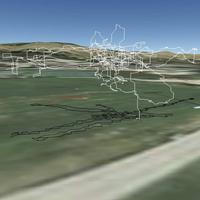 Views: 270
Views: 270  Views: 223
Views: 223 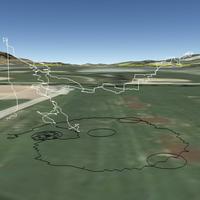 Views: 254
Views: 254  Views: 243
Views: 243 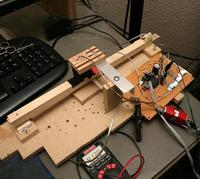 Views: 297
Views: 297 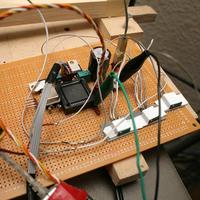 Views: 245
Views: 245 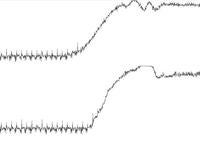 Views: 225
Views: 225 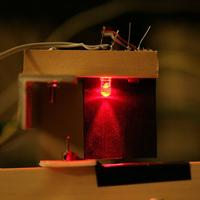 Views: 231
Views: 231 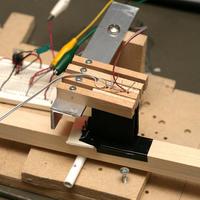 Views: 246
Views: 246 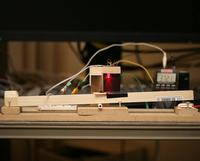 Views: 270
Views: 270  Views: 275
Views: 275 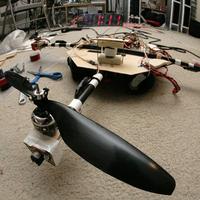 Views: 283
Views: 283 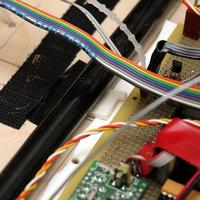 Views: 265
Views: 265 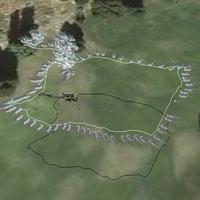 Views: 298
Views: 298 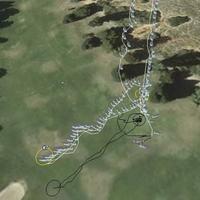 Views: 247
Views: 247 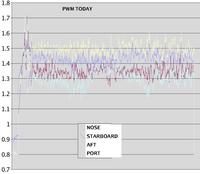 Views: 271
Views: 271 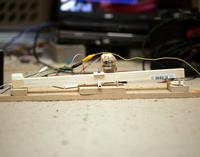 Views: 313
Views: 313 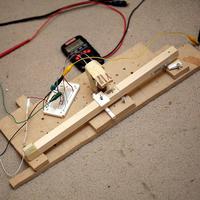 Views: 312
Views: 312  Views: 278
Views: 278 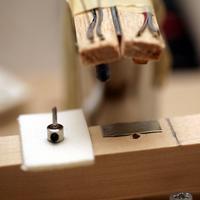 Views: 287
Views: 287  Views: 275
Views: 275  Views: 258
Views: 258 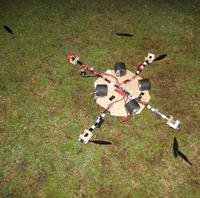 Views: 284
Views: 284 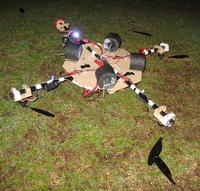 Views: 289
Views: 289 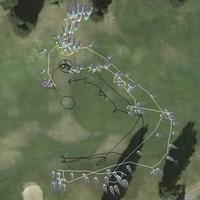 Views: 277
Views: 277  Views: 256
Views: 256 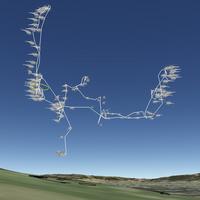 Views: 276
Views: 276 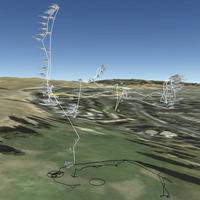 Views: 239
Views: 239  Views: 236
Views: 236 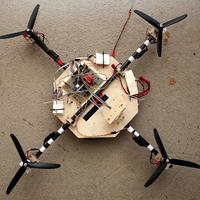 Views: 272
Views: 272 